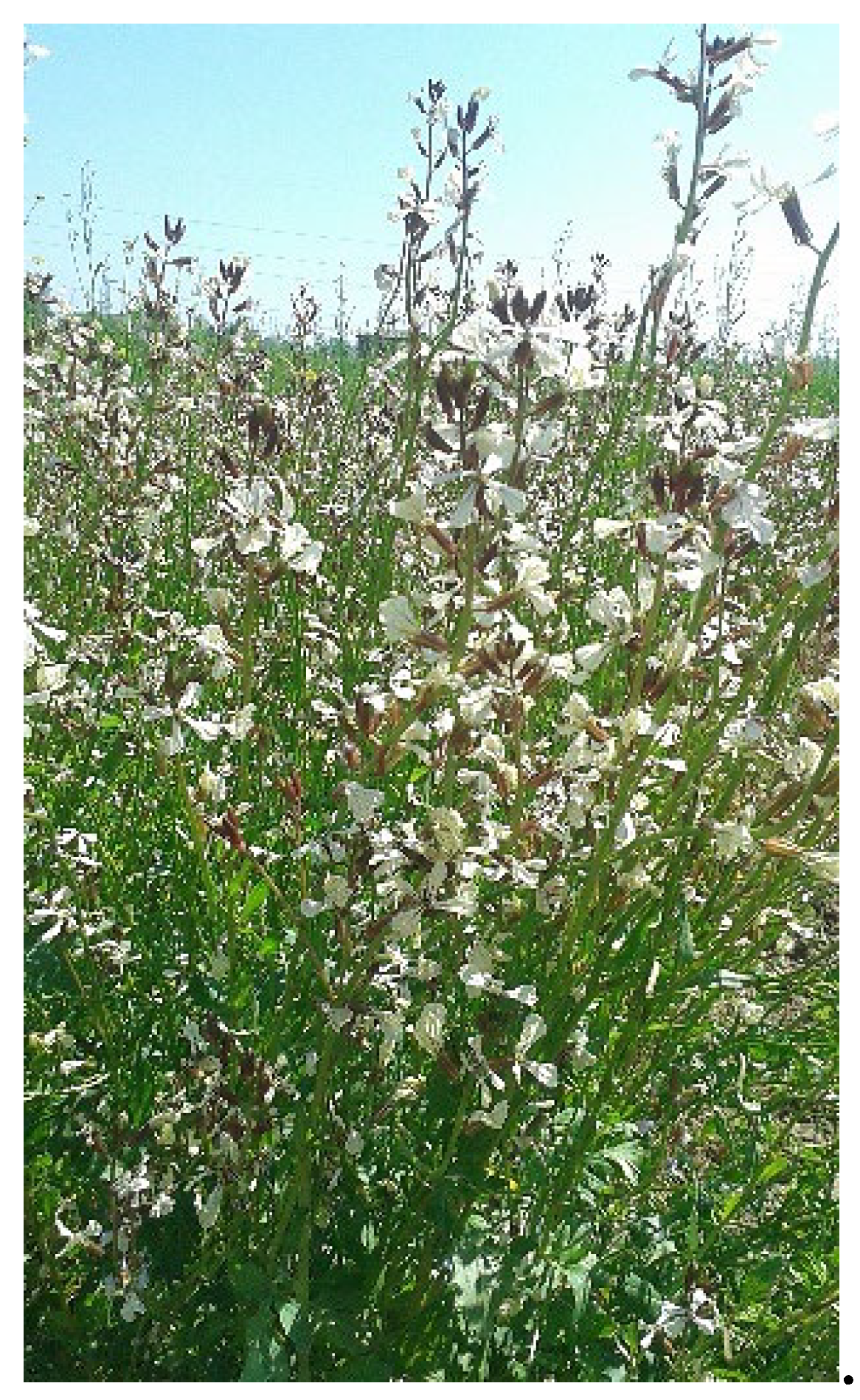
| Version | Summary | Created by | Modification | Content Size | Created at | Operation |
|---|---|---|---|---|---|---|
| 1 | Eleonora Pagnotta | -- | 664 | 2022-12-02 02:22:10 | | | |
| 2 | Amina Yu | Meta information modification | 664 | 2022-12-02 02:32:45 | | |
Video Upload Options
Eruca sativa Miller (Brassicaceae) is an insect-pollinated diploid annual species which grows spontaneously in the entire Mediterranean basin from semi-arid to arid-hot conditions and is cultivated in Northern America, Europe, and Asia as either salad or oilseed crop. Here, some essential background was provided on this versatile crop, summarizing the present status of Eruca sativa research focusing on the wealth of bioactive ingredients in its seeds, which may find exploitation in agriculture, in the food industries and as nutraceuticals for their antioxidant and anti-inflammatory properties. Fatty acids of Eruca sativa seed oil, gums, glucosinolates and soluble and insoluble phenol and flavonoid fractions in the defatted press cake are the main bioactive compounds considered to date by the scientific literature and that deserve attention for their physical and biological activities.

References
- Bell, L.; Wagstaff, C. Rocket science: A review of phytochemical & health-related research in Eruca & Diplotaxis species. Food Chem. X 2019, 1, 100002.
- Bantis, F.; Kaponas, C.; Charalambous, C.; Koukounaras, A. Strategic successive harvesting of rocket and spinach baby leaves enhanced their quality and production efficiency. Agriculture 2021, 11, 465.
- Mirzabe, A.H.; Hajiahmad, A.; Asadollahzadeh, A.H. Moisture-dependent engineering properties of arugula seed relevant in mechanical processing and bulk handling. J. Food Process Eng. 2021, 44, e13704.
- Yang, T.; Samarakoon, U.; Altland, J.; Ling, P. Photosynthesis, biomass production, nutritional quality, and flavor-related phytochemical properties of hydroponic-grown arugula (Eruca sativa Mill.) ‘standard’ under different electrical conductivities of nutrient solution. Agronomy 2021, 11, 1340.
- Lazzeri, L.; Errani, M.; Leoni, O.; Venturi, G. Eruca sativa spp. oleifera: A new non-food crop. Ind. Crops Prod. 2004, 20, 67–73.
- Guffanti, D.; Cocetta, G.; Franchetti, B.M.; Ferrante, A. The effect of flushing on the nitrate content and postharvest quality of lettuce (Lactuca sativa L. var. acephala) and rocket (Eruca sativa mill.) grown in a vertical farm. Horticulturae 2022, 8, 604.
- Bell, L.; Chadwick, M.; Puranik, M.; Tudor, R.; Methven, L.; Kennedy, S.; Wagstaff, C. The Eruca sativa genome and transcriptome: A targeted analysis of sulfur metabolism and glucosinolate biosynthesis pre and postharvest. Front. Plant Sci. 2020, 11, 525102.
- Zhu, B.; Qian, F.; Hou, Y.; Yang, W.; Id, M.C. Complete chloroplast genome features and phylogenetic analysis of e Eruca sativa (Brassicaceae). PLoS ONE 2021, 16, e0248556.
- Padulosi, S. Rocket Genetic Resources Network. Report of the First Meeting, 13–15 November 1994, Lisbon, Portugal; IPGRI: Rome, Italy, 1995.
- Community Plant Variety Office Database. Available online: https://online.plantvarieties.eu/ (accessed on 10 August 2022).
- Protocol for Tests on Distinctness, Uniformity and Stability—Eruca sativa Mill. Available online: https://cpvo.europa.eu/sites/default/files/documents/eruca_1.1.pdf (accessed on 10 August 2022).
- Bajpai, P.K.; Weiss, H.; Dvir, G.; Hanin, N.; Wasserstrom, H.; Barazani, O. Phenotypic differentiation and diversifying selection in populations of Eruca sativa along an aridity gradient. BMC Ecol. Evol. 2022, 22, 40.
- Golkar, P.; Bakhtiari, M.A. Evaluation of genetic diversity in the world collection of Eruca sativa L. using oil content, fatty acids and molecular markers. Ind. Crops Prod. 2020, 148, 112280.
- Guijarro-Real, C.; Navarro, A.; Esposito, S.; Festa, G.; Macellaro, R.; Di Cesare, C.; Fita, A.; Rodríguez-Burruezo, A.; Cardi, T.; Prohens, J.; et al. Large scale phenotyping and molecular analysis in a germplasm collection of rocket salad (Eruca vesicaria) reveal a differentiation of the gene pool by geographical origin. Euphytica 2020, 216, 53.
- Zafar-Pashanezhad, M.; Shahbazi, E.; Golkar, P.; Shiran, B. Genetic variation of Eruca sativa L. genotypes revealed by agro-morphological traits and issr molecular markers. Ind. Crops Prod. 2020, 145, 111992.
- Tripodi, P.; Coelho, P.S.; Guijarro-Real, C. Breeding advances and prospects in rocket salad (Eruca vesicaria ssp. sativa Mill.) cultivation. In Advances in Plant Breeding Strategies: Vegetable Crops; Springer International Publishing: Cham, Switzerland, 2021; pp. 95–133.
- Hanin, N.; Quaye, M.; Westberg, E.; Barazani, O. Soil seed bank and among-years genetic diversity in arid populations of Eruca sativa Miller (Brassicaceae). J. Arid Environ. 2013, 91, 151–154.
- Rahimi, V.; Karimi, K.; Shafiei, M.; Naghavi, R.; Khoshnevisan, B.; Ghanavati, H.; Mohtasebi, S.S.; Rafiee, S.; Tabatabaei, M. Well-to-wheel life cycle assessment of Eruca sativa-based biorefinery. Renew. Energy 2018, 117, 135–149.
- Rizwana, H.; Alwhibi, M.S.; Khan, F.; Soliman, D.A. Chemical composition and antimicrobial activity of Eruca sativa seeds against pathogenic bacteria and fungi. J. Anim. Plant Sci. 2016, 26, 1859–1871.
- Khalil, N.; Gad, H.A.; Al Musayeib, N.M.; Bishr, M.; Ashour, M.L. Correlation of glucosinolates and volatile constituents of six Brassicaceae seeds with their antioxidant activities based on partial least squares regression. Plants 2022, 11, 1116.
- Yehuda, H.; Khatib, S.; Sussan, I.; Musa, R.; Vaya, J.; Tamir, S. Potential skin antiinflammatory effects of 4-methylthiobutylisothiocyanate (mtbi) isolated from rocket (Eruca sativa) seeds. BioFactors 2009, 35, 295–305.
- Kaur, P.; Singh, D.; Singh, G.; Attri, S.; Singh, D.; Sharma, M.; Buttar, H.S.; Bedi, N.; Singh, B.; Arora, S. Pharmacokinetics and toxicity profiling of 4-(methylthio)butyl isothiocyanate with special reference to pre-clinical safety assessment studies. Toxicon 2022, 212, 19–33.
- Qaiyyum, I.A.; Nergis, A. The therapeutic uses and pharmacopeal action of jirjeer (Eruca sativa): A review. CELLMED 2022, 12, 1–8.




